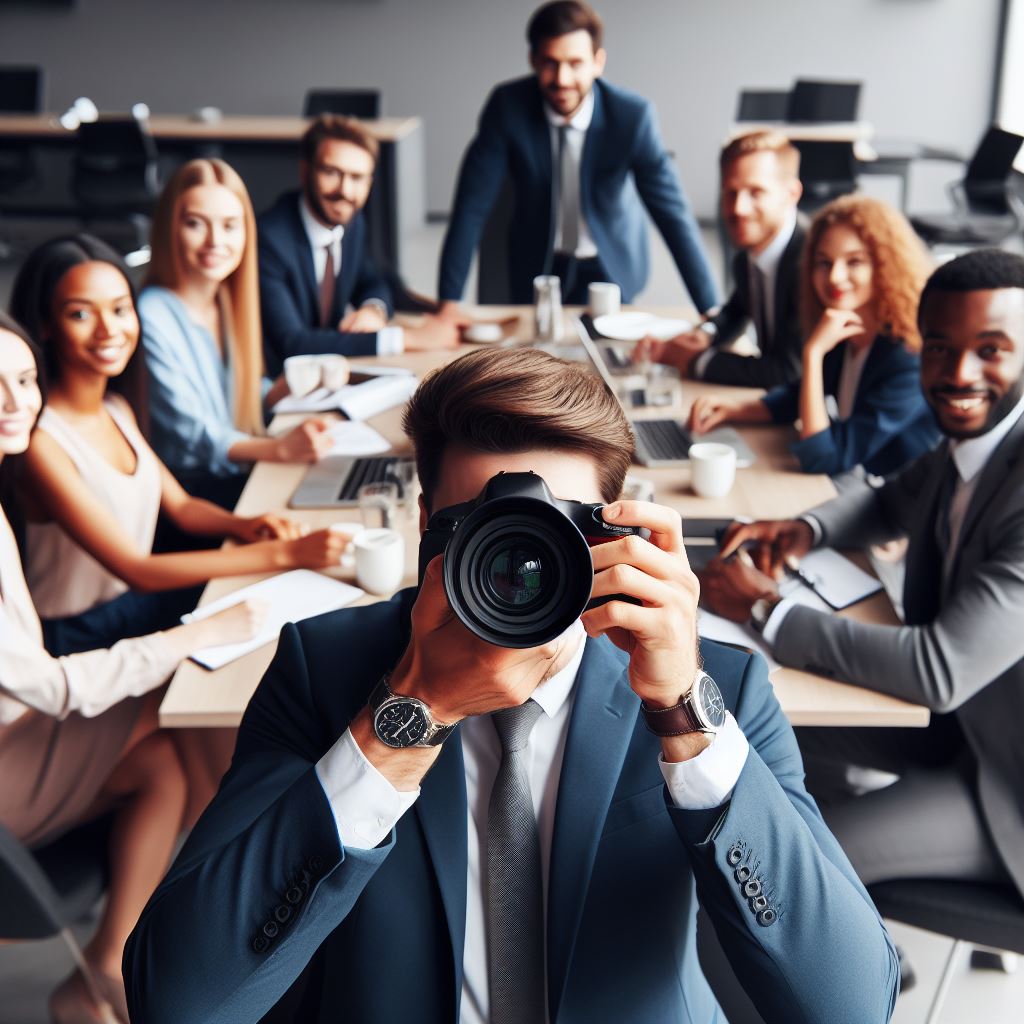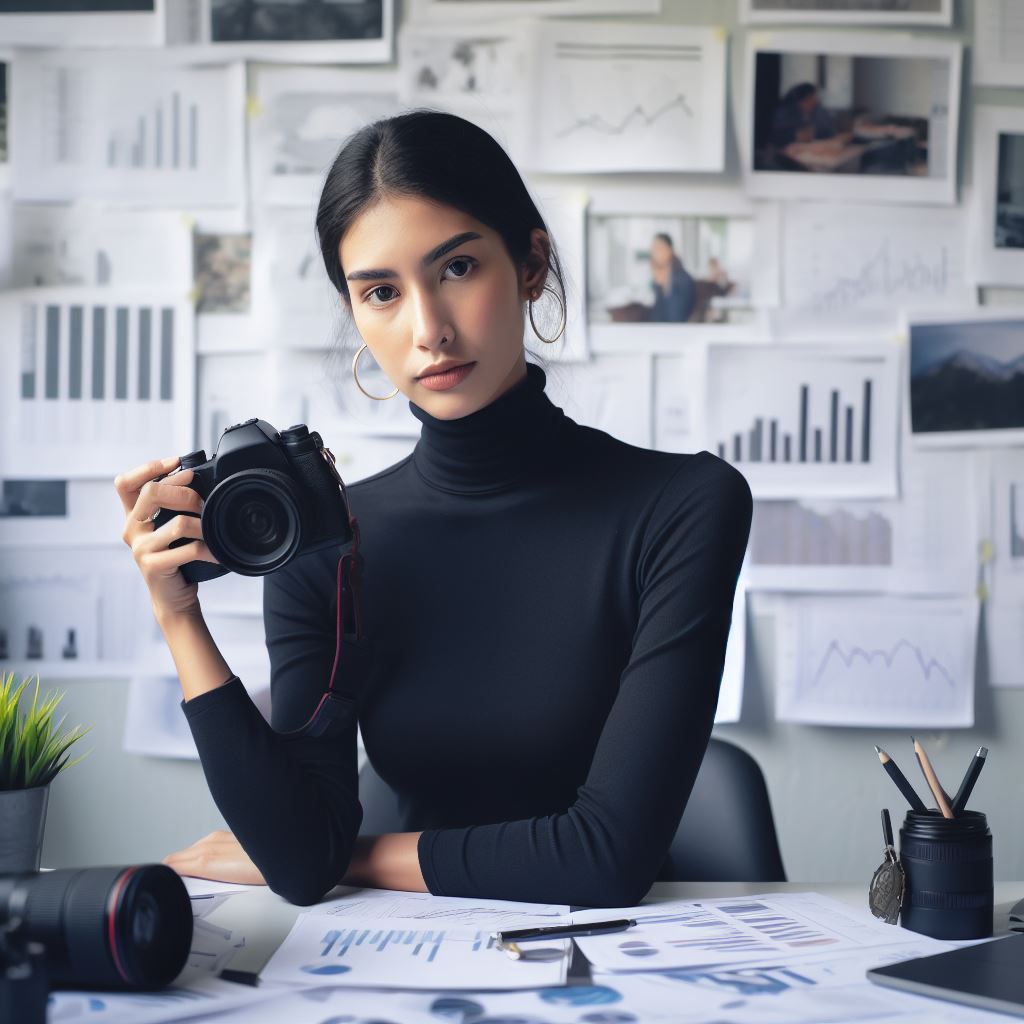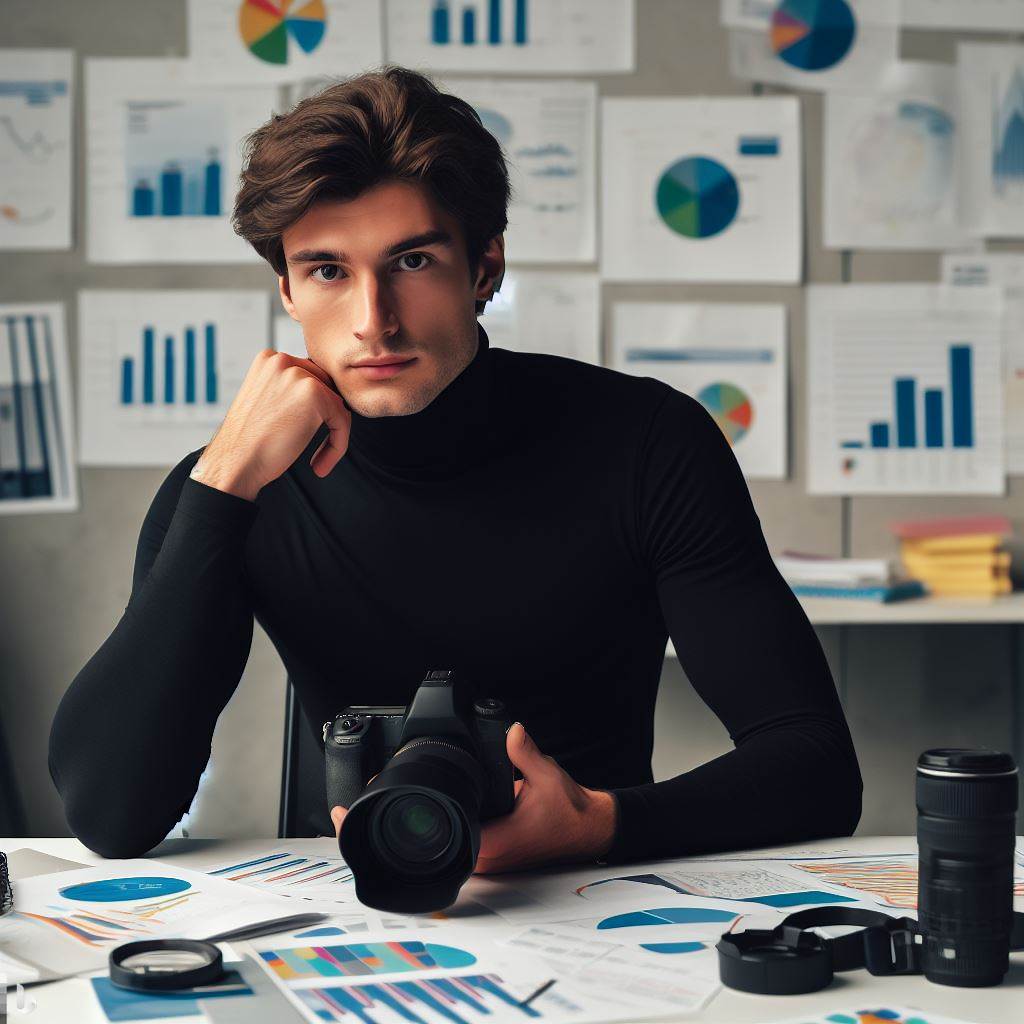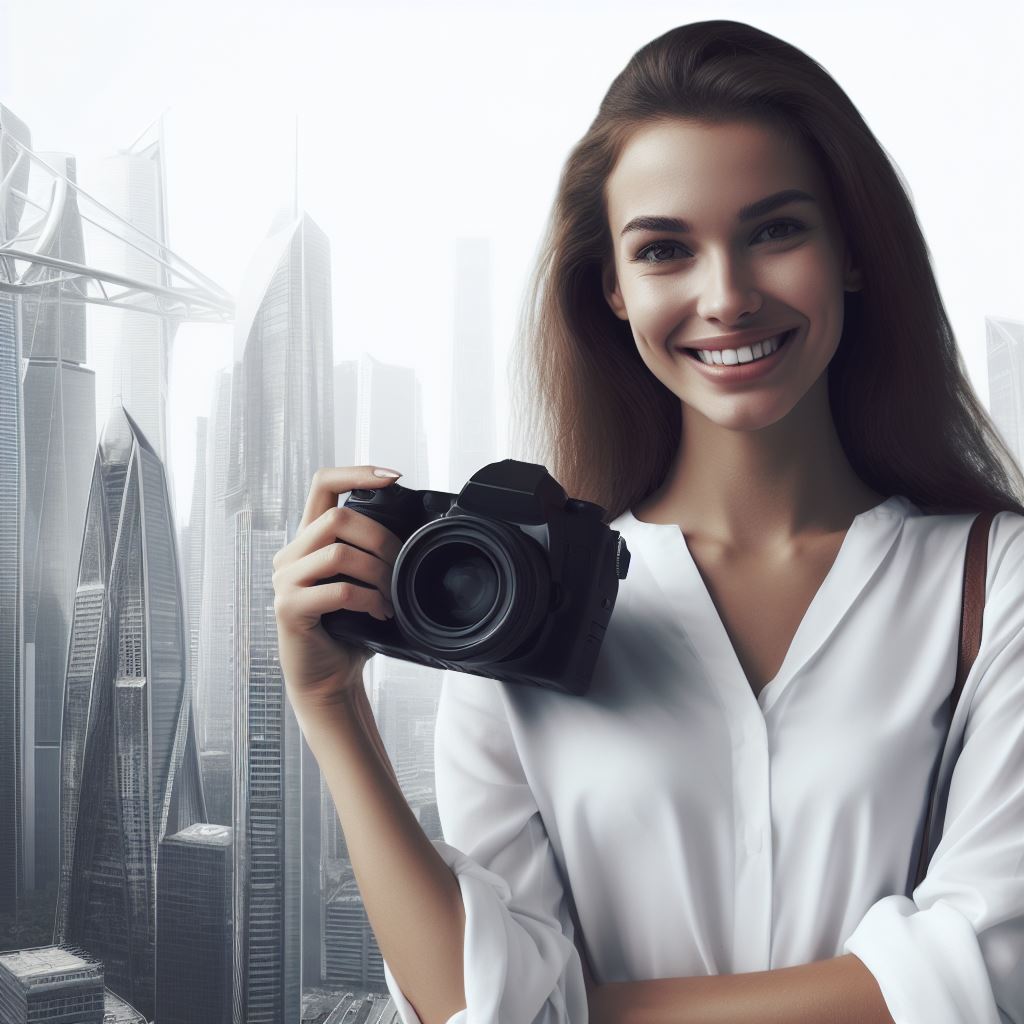Introduction
Photographers know the value of having the right gear as it heavily impacts their work. In this post, we will discuss the essential equipment that professionals’ photographers should have in their gear toolkit.
Firstly, a good camera body is crucial. It should have a high-resolution sensor, fast autofocus, and excellent low-light capabilities.
Next, a variety of lenses is essential. A versatile zoom lens, a wide-angle lens, and a telephoto lens are all necessary to capture different types of shots.
For optimal lighting, a professional-grade flash is a must-have. It provides better control and can be used on or off-camera.
A sturdy tripod is vital for achieving sharp images, especially in low-light situations or for long-exposure shots.
To protect the camera and lenses, a reliable camera bag that offers both comfort and security is needed.
Having spare batteries and memory cards is crucial to avoid missing important shots due to equipment limitations.
Filters, such as a polarizing filter or a neutral density filter, can help enhance colors and manage light in various shooting conditions.
A wireless remote or an intervalometer is helpful for self-portraits, time-lapse photography, or capturing long exposures without causing camera shake.
Lastly, post-processing software like Adobe Lightroom or Photoshop is essential for editing and enhancing images.
Having the right gear is essential for professionals photographers as it directly impacts the quality of their work. Each equipment discussed in this post plays a crucial role in achieving outstanding results.
Camera Equipment
- Primary camera body: Choosing between a full-frame or crop sensor based on your needs.
- High resolution vs. high ISO capabilities: Consider your photography genre and low-light conditions.
- Full-frame vs. crop sensor: Full-frame sensors offer better image quality and wider dynamic range.
- High resolution vs. high ISO capabilities: High resolution for detailed images, high ISO for low-light performance.
- Considerations for specific photography genres: Different genres may require specific features or capabilities.
Lenses
- Wide-angle, standard, telephoto: Choose lenses based on the desired field of view and perspective.
- Prime vs. zoom lenses: Primes offer better image quality, while zooms provide versatility.
- Specialty lenses for different genres: Macro, tilt-shift, and fisheye lenses for creative options.
Tripods and Camera Supports
- Importance of stability and reducing camera shake for sharper images.
- Types of tripods and tripod heads: Consider the weight, height, and stability of the tripod.
- Alternative camera supports for different situations: Monopods, bean bags, or even using a wall.
A photographer’s toolkit is incomplete without the proper camera equipment, lenses, and supports.
As a professional, you need to carefully consider your choices to ensure you have the necessary tools to capture stunning images.
Choosing a camera body is critical‘opt for full-frame for superior quality or crop sensor for affordability. Factor in resolution and ISO capabilities for optimal results in different shooting conditions.
Essential lenses include wide-angle, standard, and telephoto, each offering diverse perspectives. Prime lenses ensure top-notch quality, while zoom lenses provide versatility.
Specialty lenses like macro, tilt-shift, and fisheye expand creative options. Stability is key for sharp images; select a tripod that suits your style, considering weight, height, and stability.
Tripod heads vary, offering different control levels. Alternative supports like monopods or bean bags can be useful in specific situations.
In general, building a professional toolkit involves choosing the right camera equipment, lenses, and supports, considering your genre, conditions, and creative needs.
With the right tools, you’ll capture stunning images and elevate your photography.
Read: Legal Essentials: Licensing & Permits for US Photographers
Transform Your Career Today
Unlock a personalized career strategy that drives real results. Get tailored advice and a roadmap designed just for you.
Start NowLighting and Accessories
External flashes and speedlights
- External flashes and speedlights provide additional lighting for photography.
- They are beneficial for off-camera lighting, allowing for creative and versatile lighting setups.
- These flashes often come with wireless and TTL (through-the-lens) capabilities, enabling remote control and automatic exposure adjustments.
Studio strobe systems and modifiers
- Studio strobe systems are essential for professional studio shoots, ensuring consistent and powerful lighting.
- Modifiers such as softboxes, umbrellas, and reflectors help control and shape the light to achieve desired results.
Light meters
- Light meters measure the intensity of light, ensuring proper exposure in different lighting conditions.
- They are crucial tools for photographers to accurately determine the settings required for a well-exposed image.
Light stands and modifiers
- Light stands provide stability and adjustable heights, allowing precise positioning of lights.
- Modifiers such as grids, snoots, and barn doors further control the direction and spread of light.
Professional photographers rely on essential lighting tools for flexibility and control. External flashes and speedlights offer versatility in off-camera techniques.
Studio strobe systems with modifiers ensure consistent, powerful lighting in studio shoots. Light meters measure light intensity, aiding precise exposure settings.
Light stands provide stability and adjustable heights for precise positioning. Modifiers like grids and barn doors control light direction, adding creative options.
These tools, including external flashes, strobe systems, and modifiers, empower photographers to create stunning and well-exposed images in various conditions.
Read: Earning Potential: Average Photographer Salaries in the USA
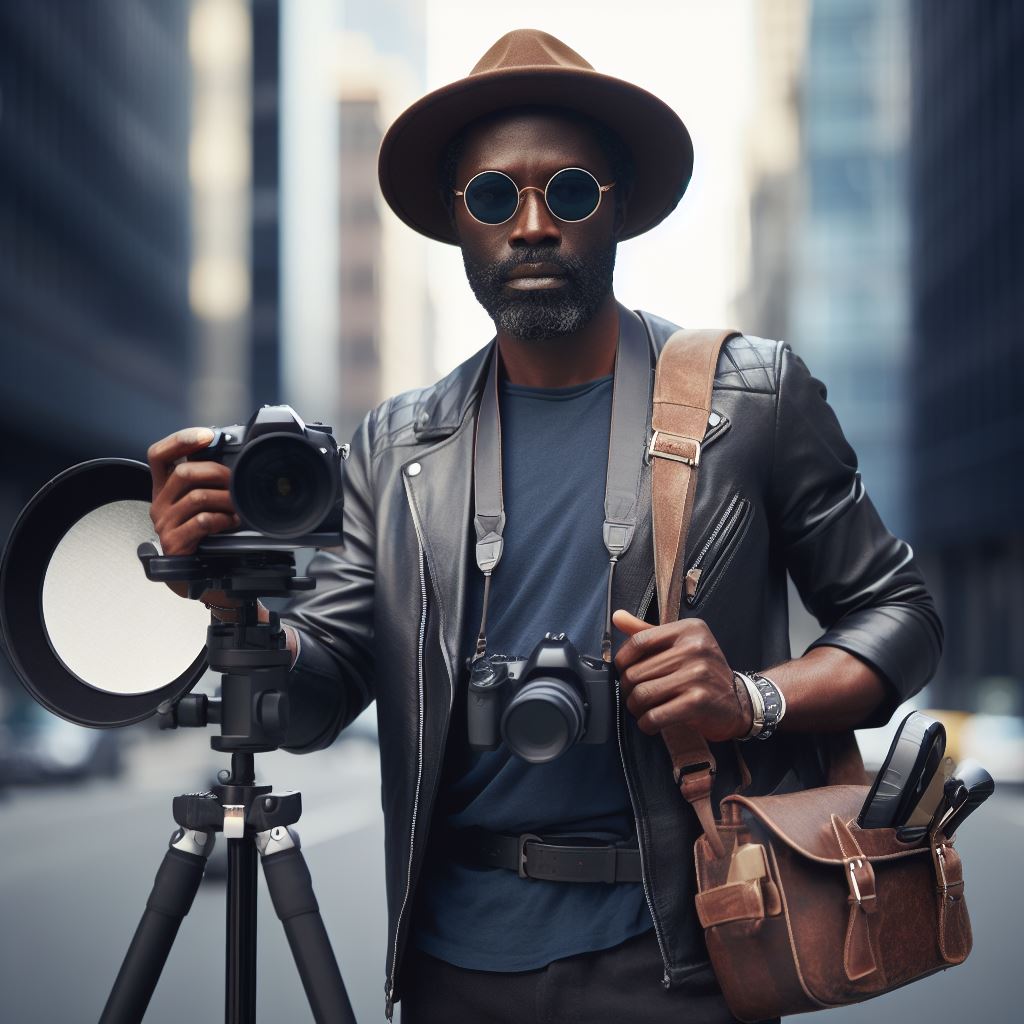
Post-Processing Tools
In the world of professional photography, post-processing tools are essential for creating stunning images that captivate viewers.
These tools help photographers enhance their photos, correct any flaws, and bring their artistic vision to life.
Let’s explore some of the essential post-processing tools that every professional photographer should have in their toolkit.
Image Editing Software
Image editing software is the backbone of post-processing. One of the most popular and widely used software among photographers is Adobe Photoshop.
With Photoshop, photographers can manipulate images, remove unwanted elements, apply filters and effects, and much more.
It offers an extensive range of tools and features that allow photographers to unleash their creativity. Other alternatives to Photoshop include Lightroom and Capture One.
These software provide photographers with a streamlined workflow for importing, organizing, editing, and exporting their images.
Lightroom, in particular, is known for its non-destructive editing capabilities and powerful cataloging system.
Computer Hardware
To run image editing software smoothly, photographers need a computer with sufficient RAM and processing power.
High-resolution images and complex edits can be resource-intensive, so having a powerful computer ensures that the post-processing workflow remains efficient.
In addition to processing power, color calibration is also crucial. Photographers must calibrate their monitors regularly to ensure accurate and consistent color representation.
Using a calibrated monitor allows photographers to have a reliable reference for editing and ensures that the final images appear as intended.
Storage Solutions
Photographers deal with a large volume of images, and efficient storage solutions are a must. External hard drives and SSDs provide ample space for storing and backing up photos.
Cloud storage services like Dropbox, Google Drive, or Adobe Creative Cloud are also popular options for off-site backups and easy access to images from multiple devices.
Showcase Your Business Today
Reach thousands of readers actively exploring professional services. Publish your business profile and grow your audience now.
Publish NowA well-organized and backup strategy is essential to avoid data loss.
Many photographers follow the 3-2-1 backup rule, which involves having at least three copies of their data, stored on two different media, with one copy stored off-site.
It ensures that even if one backup fails, the images remain protected.
Color Correction Tools
Accurate color representation is crucial for photographers, and color correction tools help achieve this.
Display calibration devices, such as Datacolor Spyder and X-Rite i1Display, ensure that the monitor displays colors accurately.
These devices measure and adjust the monitor’s color settings to match industry standards.
Moreover, monitor profiling is necessary to account for color variations among different monitors. Profiling software creates a profile specific to each monitor, compensating for its unique color characteristics.
This way, photographers can have consistent color across multiple displays.
In essence, post-processing tools play a vital role in a professionals photographer’s gear toolkit.
Image editing software, computer hardware, storage solutions, and color correction tools are all essential components that enable photographers to create visually stunning and technically accurate images.
By harnessing the power of these tools, photographers can bring their creative vision to life and deliver exceptional results.
Read: Top Photography Schools in the USA: A Comprehensive Guide
Learn More: Skill Sets Employers Seek in US-Based Animation Artists
Accessories and Miscellaneous Gear
Camera bags and cases
Protecting equipment during transportation is essential to ensure its safety and longevity.
There are various types of bags suitable for different scenarios, including backpacks, shoulder bags, and hard cases.
Batteries, chargers, and memory cards
To ensure uninterrupted shooting sessions, photographers must have sufficient power supply and ample storage capacity.
Investing in high-quality batteries, chargers, and memory cards is crucial for reliable performance.
Cleaning kits
Maintaining the longevity of gear requires regular cleaning to remove dust, dirt, and fingerprints.
Appropriate cleaning methods should be employed for different items, such as camera lenses, filters, and sensors.
Remote shutter releases and intervalometers
Essential for specific techniques like self-portraits, remote shutter releases eliminate camera shakes for precise timing.
Camera bags and cases safeguard gear during transportation, with backpacks ideal for outdoor adventures. Shoulder bags offer quick access and even weight distribution.
Hard cases provide maximum gear protection with impact and water resistance.
Batteries and chargers are crucial; invest in high-quality lithium-ion batteries for reliable power.
Memory cards store photos; choose types compatible with your camera and offering sufficient capacity.
Regularly clean lenses, filters, and sensors to maintain gear longevity using appropriate cleaning tools.
Remote shutter releases and intervalometers are essential for self-portraits, long exposures, and time-lapse photography, ensuring sharp shots without camera shakes.
Essentially, accessories like camera bags, batteries, memory cards, and cleaning kits are vital for a photographer’s toolkit, safeguarding gear and enabling uninterrupted creative sessions.
Read: The Evolution of Photography in the USA: A Historical View
Explore Further: How to Price Your Fashion Design Work
Conclusion
We have discussed various essential gear for professionals photographers. From cameras and lenses to tripods and lighting equipment, each tool plays a crucial role in capturing stunning images.
Investing in quality equipment is paramount as it ensures reliability, durability, and ultimately, better image quality.
Professional photographers understand the importance of using high-quality gear to stand out in a competitive industry.
However, it is not just about having the right tools; continuous learning and experimentation are equally important.
Technology is constantly evolving, and photographers need to stay updated with the latest gear and techniques.
By exploring new gear and experimenting with different tools, photographers can discover fresh perspectives and push their creative boundaries.
Ongoing learning and experimentation contribute to staying relevant and maintaining a competitive edge.
In summary, a photographer’s toolkit should consist of top-notch gear, but it is the photographer’s vision, creativity, and adaptability that truly make a difference.
So invest in quality equipment, embrace continuous learning, and let your curiosity guide you to new horizons.
[E-Books for Sale]
The Big Book of 500 High-Paying Jobs in America: Unlock Your Earning Potential
$19.99 • 500 High-Paying Jobs • 330 pages
Explore 500 high-paying jobs in America and learn how to boost your career, earn more, and achieve success!
See All 500 High-Paying Jobs of this E-Book
1001 Professions Without a Degree: High-Paying American Jobs You Can Start Now
$19.99 • 1001 Professions Without a Degree • 174 pages
Discover 1001 high-paying jobs without a degree! Unlock career tips, skills, and success strategies for just $19.99!

